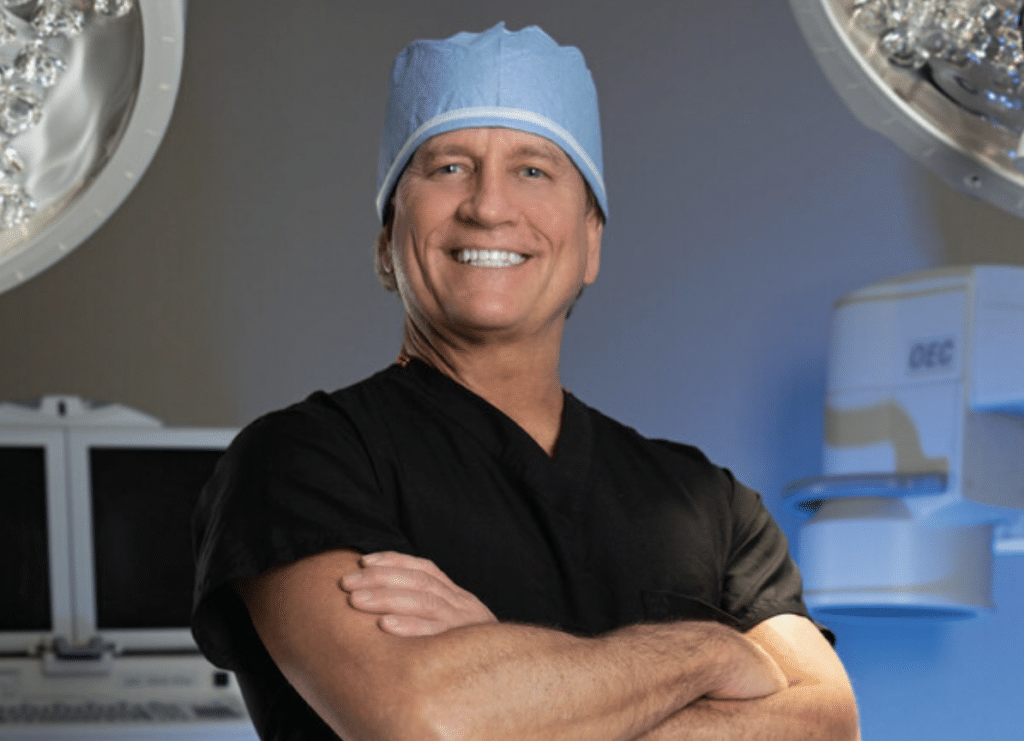During AAOS, Dr. Jeffrey DeClaire Discusses New Ligament Balancing Tool and Research Showing Better Outcomes and Almost 98% Patient Satisfaction
Jeffrey DeClaire, M.D., a pioneer in robotic-assisted total knee replacement and founder of the Michigan Knee Institute, is the first in the world to use a new balancing tool that combines artificial intelligence and robotic-assisted technology, provides superior outcomes for knee replacement patients.
Dr. DeClaire will discuss his research during the Annual Meeting of the American Academy of Orthopedic Surgeons in Las Vegas, March 7-11. He participated in clinical studies of the BalanceBot™, a robotic knee ligament tensioning device that helps the surgeon balance knee ligaments and craft an accurate surgical plan. The result is a more normal ligament function tailored to the patient’s unique anatomy.
The BalanceBot™, manufactured by Corin Group, allows physicians to have a “second pair of eyes” before they make the cuts.
Combined with robotic-assisted surgery and artificial intelligence, Dr. DeClaire’s “Elite Knee” results in a more successful knee replacement and reduces the risk of complications, which can sometimes involve malalignment and knee instability, stiffness, limitation of motion, and pain. Multi-center clinical studies show a 98% patient satisfaction rate for patients two years post-surgery, which far surpasses an 81 percent satisfaction rate for traditional, non-robotic techniques.
“I am a nurse, so I did my research to find a physician using the most advanced procedure to properly fit the implant,” says Gretchen Lapham, Grand Rapids, MI, who underwent knee replacement with Dr. DeClaire. “My recovery was faster than my friends who didn’t have robotic surgery combined with the balance tensor device. I was pain-free within days and am back to hiking and swimming.”
Using a 3D model of the patient’s anatomy and the BalanceBot to balance ligament tension, Dr. DeClaire can visualize and plan implant positioning. He utilizes a robotic cutting guide to make the planned bone cuts, with the BalanceBot ensuring soft tissue balance. Soft-tissue balance is vital to ensure the total knee replacement’s short- and long-term success.
“This new high-tech combination of robotics, 3D computer technology, and the BalanceBot to monitor the tension guarantees an incomparable level of precision and accuracy compared to traditional methods,” says Dr. DeClaire. It means that patients can resume all their activities without pain or mobility issues and never look back.”
During AAOS, Dr. DeClaire will join physicians representing multi-centers throughout the U.S. to present findings showing that balancing ligaments is more significant than alignment for the best outcomes of total knee replacement patients. The study measured pain levels of 266 patients two years after robot-assisted knee replacement to determine how joint laxity (ligament balance) and alignment play a role in improved joint pain. Researchers found no association between alignment and outcome, indicating joint balance may have a greater impact on outcome than alignment.
Dr. DeClaire’s clinical research addressing the impact of alignment and ligament following his “Elite Knee” procedure is published in The Journal of Arthroplasty. The study concluded that knee replacement patients who had surgery using this new technique have better outcomes two years post-operatively than patients who had traditional surgery.


